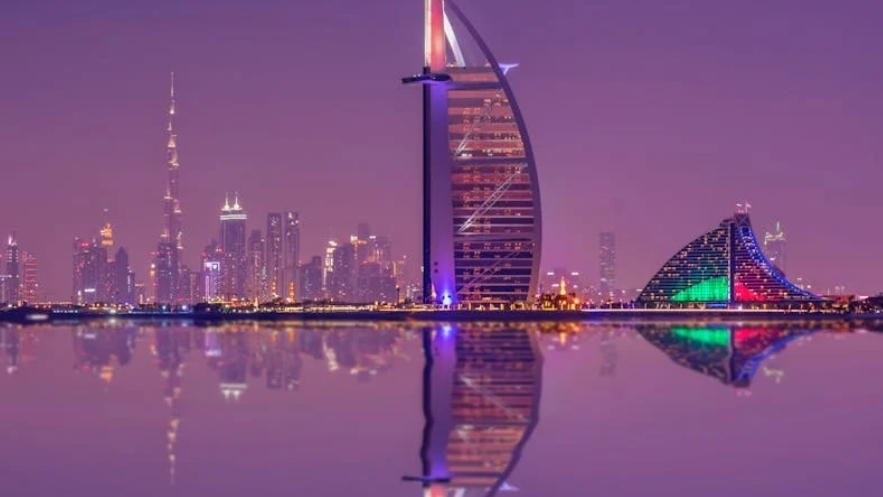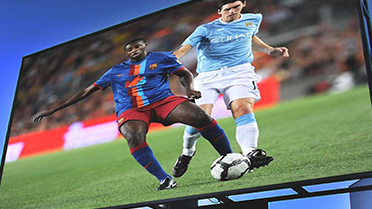




Installing LED displays can make a restaurant's business boom a reality. An LED display at the restaurant entrance can showcase signature dishes, special offers, and other information, attracting passersby and drawing more people into the restaurant.Inside the restaurant, LED displays can create a unique dining atmosphere. Playing food videos, soothing music, and natural scenery can enhance the dining experience for customers. In Western restaurants, elegant classical music and romantic landscape videos can create a romantic ambiance. In Chinese restaurants, lively folk videos and cheerful music can add a festive touch.Restaurants can also use LED displays to interact with customers. Hosting interactive games or prize draws allows customers to participate, increasing their dining experience and improving satisfaction and loyalty. LED displays provide restaurants with a brand-new marketing and service platform, helping them attract more customers and boost their business.
LED displays are a secret weapon for trade show marketing. At trade shows, numerous companies vie for visitors' attention. LED displays, with their unique advantages, have become key to helping companies stand out.First, LED displays can showcase rich content. Companies can play product introduction videos, corporate promotional videos, case studies, and more. This is more vivid and intuitive than traditional display boards and brochures. Visitors can quickly understand a company's core products and advantages.Second, the dynamic display effects of LED displays attract more attention. Compared to static displays, dynamic images are more likely to capture visitors' interest. Companies can also adjust the displayed content based on different time periods and visitor feedback.Furthermore, LED displays can be remotely controlled and multi-screen linked. Companies can update the content on their displays in real time at the trade show, or have multiple displays simultaneously show different
Large LED displays have become a new focal point for attracting customers to shopping malls. Installing large LED displays in prominent locations such as the mall's atrium and entrances can attract a large number of customers' attention. High-brightness and large-size displays can showcase stunning visuals, leaving a lasting impression on customers.Malls can use LED displays to play various content, such as trailers for popular movies, fashion show videos, and promotional information. Movie trailers can attract movie lovers, fashion show videos can create a fashionable atmosphere, and promotional information can entice customers to make purchases.Large LED displays can also achieve multi-screen interaction. Installing multiple displays on different floors and in different areas of the mall, simultaneously playing the same or related content, can create a unified atmosphere, making customers feel an omnipresent attraction within the mall.Furthermore, malls can use LED displays to intera
LED displays play a vital role in helping companies significantly upgrade their brand image. A company's brand image is a crucial asset, and LED displays can showcase its brand characteristics and culture in various ways.In a company headquarters or showroom, installing large LED displays can demonstrate the company's development history, product advantages, and innovative achievements. Vivid visuals and videos allow visitors to gain a more intuitive understanding of the company, helping to enhance its image in the eyes of customers and partners.When participating in various exhibitions, LED displays can become the highlight of a company's booth. By displaying attractive advertising videos and product images, they can attract more visitors. Compared to competitors, booths using LED displays are more eye-catching and increase the company's exposure.Companies can also install LED displays in office buildings, factories, and other locations to showcase their values, employee achievements,
Cleverly utilizing LED displays can effectively enhance a store's commercial appeal. First, installing an LED display at the store entrance can attract the attention of passersby. By displaying engaging advertising videos and promotional information, more people can learn about the store's products and services.Inside a store, LED displays can be used to showcase product details and features. For example, a clothing store can use displays to display information such as clothing styles, materials, and matching styles. A jewelry store can showcase the craftsmanship and design of the jewelry. This not only allows customers to better understand the products but also makes shopping more enjoyable.LED displays can also create a unique atmosphere. In a restaurant, playing food videos and warm music can create a pleasant atmosphere while customers enjoy their meals. In a bar, dynamic videos and lighting effects can create a lively atmosphere.Furthermore, businesses can use LED displays to inte
In the commercial advertising sector, LED displays are undoubtedly eye-catching. Their unique advantages captivate consumers. High brightness is a key feature of LED displays, enabling clear display of advertising content even in bright sunlight. This makes them a significant advantage in outdoor advertising.Also, vibrant colors are a key advantage of LED displays. They produce rich, lifelike colors, making advertisements more vivid and engaging. Whether promoting products or events, vibrant colors quickly capture consumers' attention.The dynamic display feature makes LED displays stand out in advertising. Compared to traditional static ads, dynamic images are more appealing. They can showcase product features and advantages through video and animation.In addition, LED displays can be remotely controlled and timed, allowing businesses to tailor advertising content to suit different time periods and locations. LED displays are increasingly used in shopping centers, transportation hubs,
Micro LED displays, a technological breakthrough, are illuminating the future. Micro LED is a new display technology that miniaturizes traditional LED chips, down to micron-scale dimensions. This enables Micro LED displays to offer higher brightness, higher contrast, and faster response times.Compared to traditional LED displays, Micro LED displays offer higher pixel density, resulting in clearer, more detailed images. They also offer better energy efficiency and a longer lifespan. Micro LED displays' small size and low power consumption make them an ideal choice for wearable devices.In the large-scale display sector, Micro LED displays can be seamlessly spliced together to create ultra-large displays. This holds broad application potential in venues such as stadiums and shopping malls. However, Micro LED displays currently face some technical challenges, such as chip manufacturing and mass transfer.With continued technological advancement, these challenges will gradually be resolved.
The 8K UHD revolution in LED displays is revolutionizing vision. 8K UHD technology boasts an extremely high resolution, with four times the number of pixels as 4K, delivering incredibly detailed and lifelike images. This allows viewers to see even greater detail when watching 8K videos.In home theaters, 8K LED displays offer a more immersive viewing experience. Every frame seems tangible, immersing viewers in the world of the film. In commercials, 8K UHD images clearly showcase product details, capturing consumers' attention.In live sports broadcasts, 8K LED displays allow viewers to see every movement and expression of athletes, making them feel as if they were on the field. However, achieving 8K UHD requires not only the display technology but also sufficient bandwidth to transmit 8K video.With the widespread adoption of 5G networks, the transmission challenges of 8K video will be resolved. In the future, 8K LED displays will become increasingly popular and mainstream, ushering in a
LED displays powered by quantum dot technology have become a new favorite in the tech world. Quantum dots are nanoscale semiconductor materials with unique optical properties. When stimulated by light or electricity, they emit light of a specific color with high color purity and brightness.Applying quantum dot technology to LED displays can significantly improve color performance. Quantum dot LED displays can produce more vivid, lifelike colors with a wider color gamut. This allows viewers to experience richer color depth when viewing images and videos.In the television industry, quantum dot LED displays have become a standard feature in high-end products, allowing consumers to enjoy a more vibrant visual experience at home. In commercial advertising, the high color rendition of quantum dot LED displays can attract more attention and enhance advertising effectiveness.Furthermore, quantum dot technology can improve the energy efficiency of LED displays. Because quantum dots can more pre